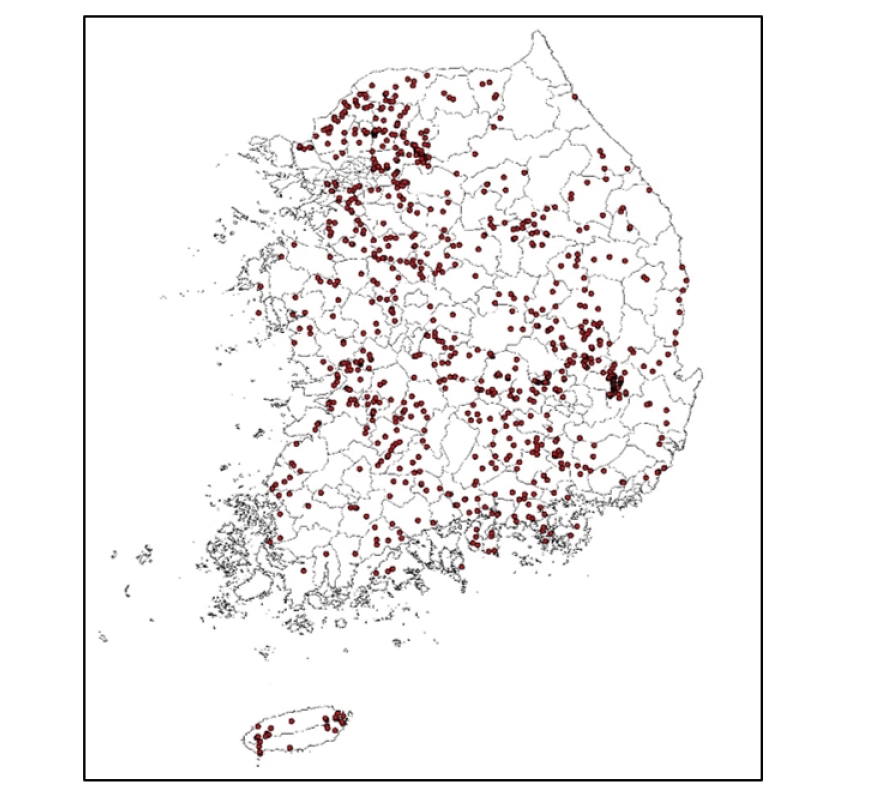Abstract
The purpose of this study was to investigate the germination ecology and soybean yields with different densities of
Figures & Tables

Fig. 1. Distribution map of in Korea.
Yong Ho Lee1 Soo In Sohn2 Sun Hee Hong1 Chang Seok Kim3 Chae Sun Na4 Young Ju Oh5,*
1Plant Life & Environmental Science, Hankyong National University, Anseong 17579, Korea
2Biosafety Division, National Institute of Agricultural Science, RDA, Jeonju 54873, Korea
3Highland Agriculture Research Institute, National Institute of Crop Science, RDA, Pyeongchang 25342, Korea
4Seed Conservation Research Division, Baekdudaegan National Arboretum, Bonghwa 36209, Korea
5Institute for Future Environmental Ecology Co., Ltd, Jeonju 54883, Korea
The purpose of this study was to investigate the germination ecology and soybean yields with different densities of

Fig. 1. Distribution map of in Korea.